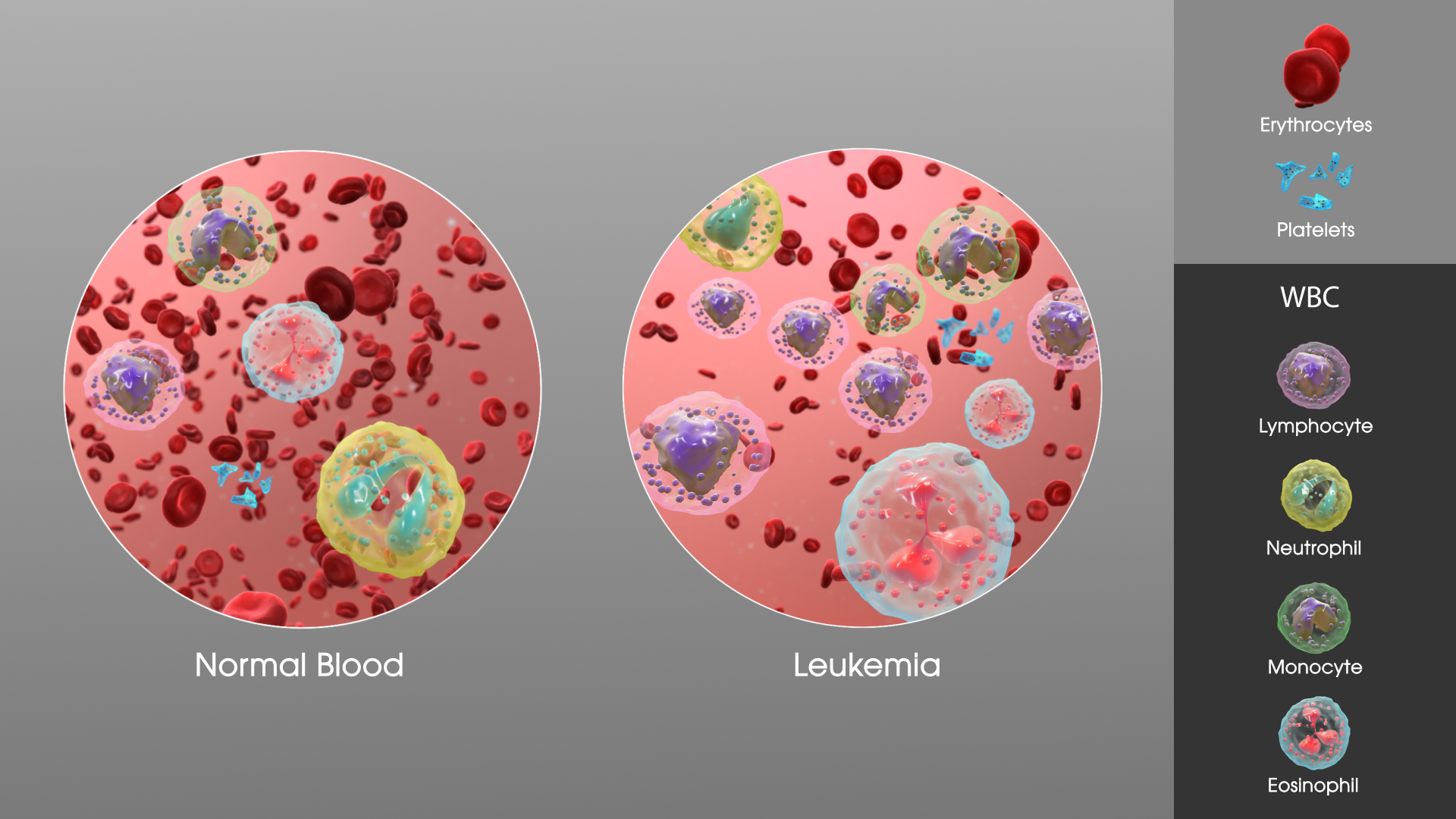Leukemia is the cancer of blood cells, which is caused due to an increase in the number of white blood cells in the human body.

Blood has three forms of cells namely white blood cells which help in fighting infection, red blood cells which aid in carrying oxygen, and the platelets which assists the blood to clot. Billions of new blood cells are formed in the bone marrow every single day and actually majority of them are red cells. However when someone has leukemia, the body forms more white cells than it requires.
The human body consists of two types of white blood cells listed below:
- Lymphoid cells
- Myeloid cells
Leukemia may occur in both lymphoid cells or myeloid cells.
Types of leukemia
The common types of leukemia are as below:
- Acute lymphocytic leukemia (ALL)
- Acute myelogenous leukemia (AML)
- Chronic lymphocytic leukemia (CLL)
- Chronic myelogenous leukemia (CML)
- Other rare types of leukemia
Causes
It is not easy to fully understand all the exact causes of leukemia. People who have it are found to have certain abnormal chromosomes. However, the chromosomes don’t result in leukemia.
It is not possible to fully prevent leukemia, however, it may be possible that certain aspects in the environment could trigger its development. As an example, one who is a tobacco smoker is at high risk than a non-smoker to some types of leukemia.
It’s also associated with a large amount of radiation exposure and certain types of chemicals. Some types of chemotherapy and radiation therapy which is used to treat other cancers may actually result in leukemia. The risk that you’ll develop leukemia depends on the kinds of the chemotherapy drugs used. Another risk factor for leukemia is family history.
Symptoms
The symptoms differ based on the type of leukemia. Some of the common leukemia signs and symptoms are listed below:
- Fever
- Persistent fatigue and weakness
- Weight loss without trying
- Severe or frequent infections
- Easy bleeding or bruising
- Swollen lymph nodes, enlarged liver or spleen
- Small red spots on skin
- Recurrent bleeds in nose
- Excessive sweat, at night time specially
- Bone pain or tenderness
Treatments
The treatment depends on several factors such as the type of leukemia, how far the cancer has spread, and how healthy the patient is amongst several others. Some of the most common treatment options are listed below:
- Chemotherapy
- Radiation
- Targeted therapy
- Biologic therapy
- Surgery
- Stem cell transplant
Disclaimer: The information in no way constitutes, or should be construed as medical advice. Nor is the above article an endorsement of any research findings discussed in the article an endorsement for any of the source publications.
Sources-
- https://www.webmd.com/cancer/lymphoma/understanding-leukemia-basics#1
- https://www.mayoclinic.org/diseases-conditions/leukemia/symptoms-causes/syc-20374373
The bones of the skeletal system play several key functions for the body, from providing the body support to allowing to move. They serve a vital role in fat storage and blood cell production as well.
Read More..
Whole blood donation is the most common type of donation wherein the blood is separated into transfusable blood components – red cells, plasma, platelets and/or cryoprecipitated AHF.
Read More..










